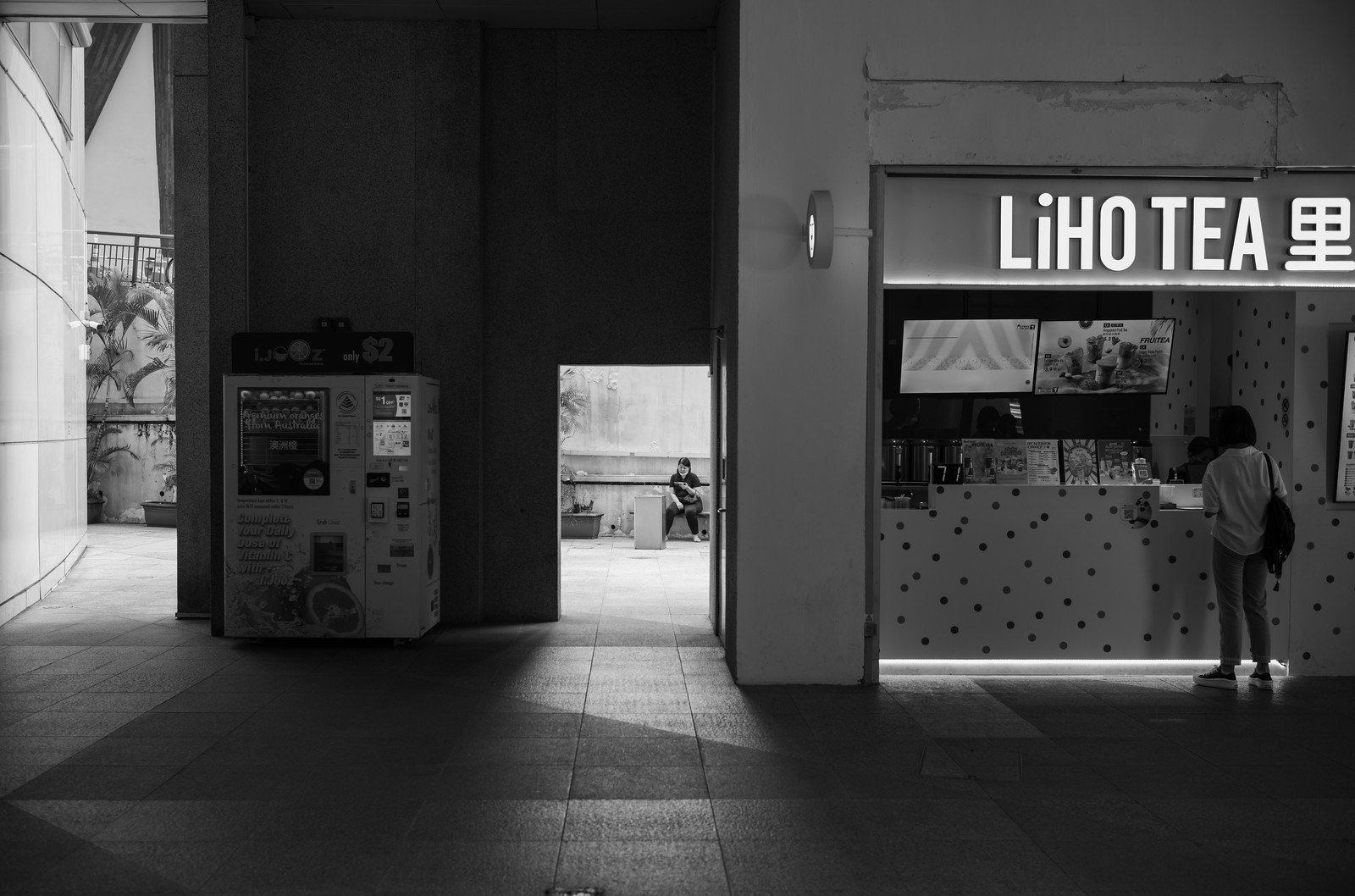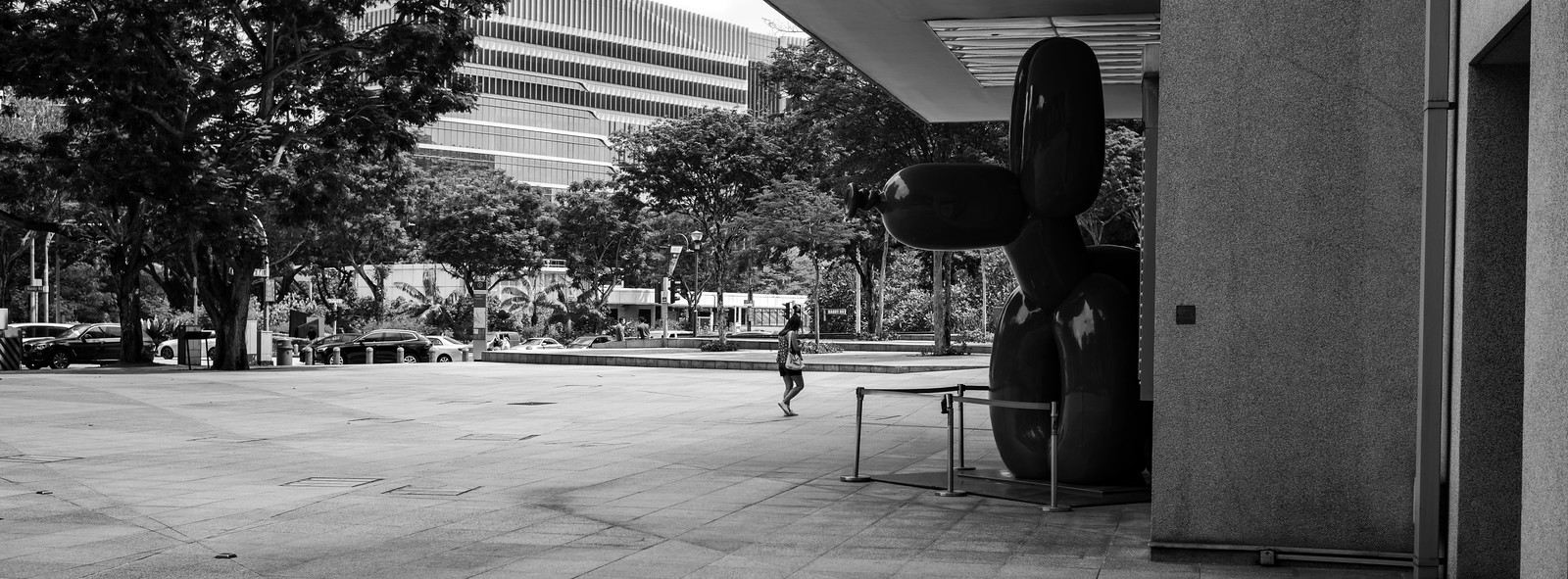A question I asked myself…
How do I start writing on the epitome of imaging quality from a brand such as Leica? And more so for a photography tool that is unique only to them in the whole market. But kindly bear with my attempt.
The photography tool we focus on today is the Leica M10 Monochrom with the 35mm f1.4 Summilux APSH (M60 version). I will not wax lyrical on how well built and tuned this is. Even within Leica, they aren’t built equal.
If you know, you know and that is simply that so let us focus on the photos instead.
The build quality of the M60 version of the 35mm Summilux makes the standard 35 Summicron APSH I or II weep in deference.
says me, the owner of a 35 Summicron ASPH I
Before Leica Camera Singapore kindly loaned me the Leica Q2 Monochrom (linked) for a review, I was, like many of us, a non-believer of why a pure monochromatic camera would cost more than the color, more versatile counterparts.




At least that was my belief until I saw the files on my computer’s screen, and I went away convinced.
After the Q2 Monochrom, I am a firm believer that the Monochrom sensors represents a step higher in imaging quality even within the lofty standards in Leica.
However, I did not pursue whether it was possible to try the Leica M Monochrom one day. Maybe there was a part of me that did not want to know. But I guess fate played a hand and a kind friend generously lent me his set for a spin.
My (short) journey with the M10 Monochrom
Words sometimes do not suffice, so I will go ahead with sharing my creations during the few short days with the set-up. I hope you enjoy them.

Using a rangefinder has always been its own unique experience (no, my very loved Fujifilm X-Pro3 is not a rangefinder, but a rangefinder-inspired design). I will definitely invite you to try a rangefinder if you haven’t.
The Leica M has always presented a even higher level of potential optical performance than the Q series.

Heart-achingly good because you know few will ever come close to the M Monochrom and how unattainable it is due to the price of entry.
The Monochromatic sensor renders black and white images differently from how a color-capable sensor would, and I am not saying this from a marketing spew perspective and from what I have experienced handling the monochrom’s files.
I shot from the eye, the hip, zone-focused, and frankly no one even bothered, and this feeling of being unnoticed is what I really enjoy.
The last bit about portraiture and the lovely 35mm world
I am not a professional street photographer (if that is a thing), and I have a heavier focus on portraiture. Again, how the M10 Monochrom rendered portraits with the 35mm Summilux ASPH lens made my heart beat faster.
The 35mm Summilux APSH is not the most characterful 35mm lens; I find it pretty clinical in nature (though, in my opinion, the 35mm Summilux FLE is even more clinical), but I love how the crispness of the lens rendering lends a dimension of extreme sharpness and details which falls-off very gently to the out of focused areas. Many modern pieces of equipment end up having a ‘steep’ fall-off which I find harsh, unlike the gentler rendering I prefer.
Conclusion
Going by common sense, nothing is and should be perfect, so I will say the M10 Monochrom is not perfect, but it is so heartachingly close to perfection as a photography tool.
Some will still lament the M camera’s lack of auto-focus (well, I am not here to offend, but quite a big percentage of this people likely have not shot adequately long with a Leica M camera to understand) but if it is back to what Leica terms as the ‘Messsucher’ experience, few will come close to distilling the photography experience to the most essential interplay between subject, tool and photographer like the M Monochrom.
Thank you for reading.
Self-plug: Not all of my test cameras make it into a review; instead, they go onto my Instagram account. If you don’t mind, follow me at http://www.instagram.com/keith.wee
Disclaimers:
- All images shared were photographed by me and edited in Lightroom Classic CC to my preferences.
- I only use DNG files with the Monochrom. This is the same when I use the Leica M10 and Q.
- I take pride in not being a writer who earns through selling affiliate links and can provide a neutral point of view.





















This is absolutely stunning. Thank you for sharing. To pick your brains, between the M10-R and M11 which will you choose?
LikeLike
Hi! Thank you. That’s a tough choice I guess but I’ll actually be very contented with the M10-P (the quieter shutter mechanism over the M10 makes a real difference) it’s not a simple direct answer but let me try.
If budget is not an issue, I’ll always say the M11 but between the two my pick will be the M10-R as it now sits at the point where it’s on the slightly pricey side vs M11 but comes with a new sensor with improved DR and this might be what one prefers if this is a factor in one’s photography.
For what I shoot, a 24-30 MP is perfect hence the M10-R and M11 does not have as much attraction for me.
LikeLike
Bravo! It is not often we see excellent shots from the Monochrom. You have inspired me to go take some photos.
LikeLike
Hi Keith. You might expect comments saying that taking a colour picture and converting it in capture one / Lightroom gives similar results. Despite setting the record straight, many refuse to believe or accept the validity of monochrome sensors. The price seems exorbitant but then Leica has always been and will remain expensive. The price will only increase. Compared to most other brands the lenses retain their value and are often sold second hand at their original price or even higher after many years.
Having a monochrome sensor with the absence of colour array allows one to make decent images even at a higher ISO. Even during low light. There may be some arguments that using IBIS and lenses with IS can also do this. But when one adds leica optics into the mix, the final image quality is beyond reproach. I have not seen a wide open portrait on our website as good as this. Your daughter seems to emerge from the backgrounds which doesn’t just melt but subsides away. Truly great.
LikeLiked by 1 person
Hi Baladino, I fully agree with your sharing. It’s the same issue as to why some still lament why they are asked to pay such prices for a tool that can’t autofocus when they have not even bothered to experience one themselves.
The Monochrom sensors are different , and I also was convinced after testing the Q2M, a few experienced and patient friends have tried I’m sure – to do a BW conversion to proclaim it is the same but unfortunately it is not that straightforward and thank you for bringing up this point.
LikeLike
Keith, I hope to get a Summilux by end of this year. Looking at the image of your daughter with a 35mm F1.4, it would be reasonable to think a Summilux 50mm F1.4 would give better bokeh and compression. The Zeiss 35mm F2.8 I’ve been using so far if not used wide open has been phenomenal. There is terrific levels of detail, contrast and sharpness. It does render the image a little cooler , I suspect due to the coatings on the lens. So I plan to get a couple of lenses before getting a monochrome sensor camera. Enjoy your weekend Keith. And don’t let the Fujifilm fans brainwash you.
LikeLike
Hi, looking forward to you trying the 50 Summilux, yes, it will give better compression for sure. End of the day I believe any and every brand will have their unique strengths, and the Monochrom is Leica’s while film simulations are Fujifilm’s 🙂
LikeLike
Time to try the m10 mono with the FLe!
LikeLiked by 1 person
Wa , that’s gonna go clinical sharp haha. Interesting
LikeLike